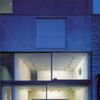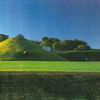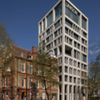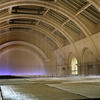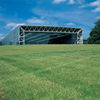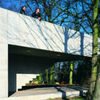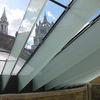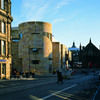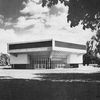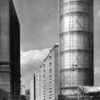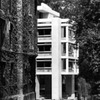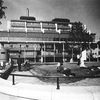Museum of London
Subscribe now to instantly view this image
Subscribe to the Architects’ Journal (AJ) for instant access to the AJ Buildings Library, an online database of nearly 2,000 exemplar buildings in photographs, plans, elevations and details.
Already a subscriber? Sign in
Entrance portico seen from within the rotunda
John Donat and Martin Charles Download Original
A museum built on a busy roundabout on the edge of the Barbican site in central London to document the history of the city
The Museum of London is the largest urban history museum in the world. It was opened on 2nd December 1976 by Her Majesty the Queen as London’s first new post-war museum. There are over two million items in the collections including art, archaeology, photography, social and working history, life stories, and film.
Seen from the road as a giant brick circular bastion, which forms a circular forecourt to the entrance, the white ceramic tile clad museum is accessed on the first floor from raised walkways.
The museum is laid out in a series of chronological galleries starting in Prehistory, through the Stuarts and ending in 20th Century London. The galleries are built around several large historical artefacts, such as the Lord Mayor's coach while others overlook London's Roman walls.
Data
- Begun: Apr 1971
- Completed: Dec 1976
- Sector: Arts and culture
- Address: Museum of London, 150 London Wall, London, EC2Y 5HN, United Kingdom
Professional Team 
- Architect: Powell & Moya
- Project architects: Bernard Throp, John Cantwell, Sir Phillip Powell
- Client: Board of Governers, Greater London Council, Corporation and City of London
- Main contractor: G. E. Wallis
- Exhibition Contractors: Russel Bros (Paddington) Ltd.
- Electrical and exhibition lighting engineers: Peter Jay
- Mechanical engineer: David Kut
- Quantity surveyor: E. C. Harris



























